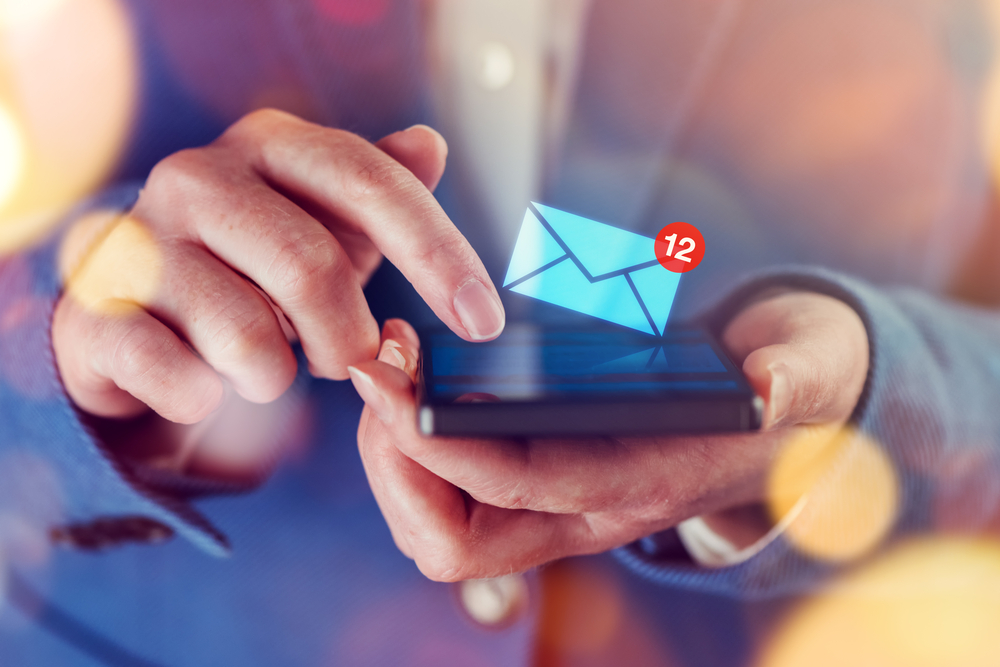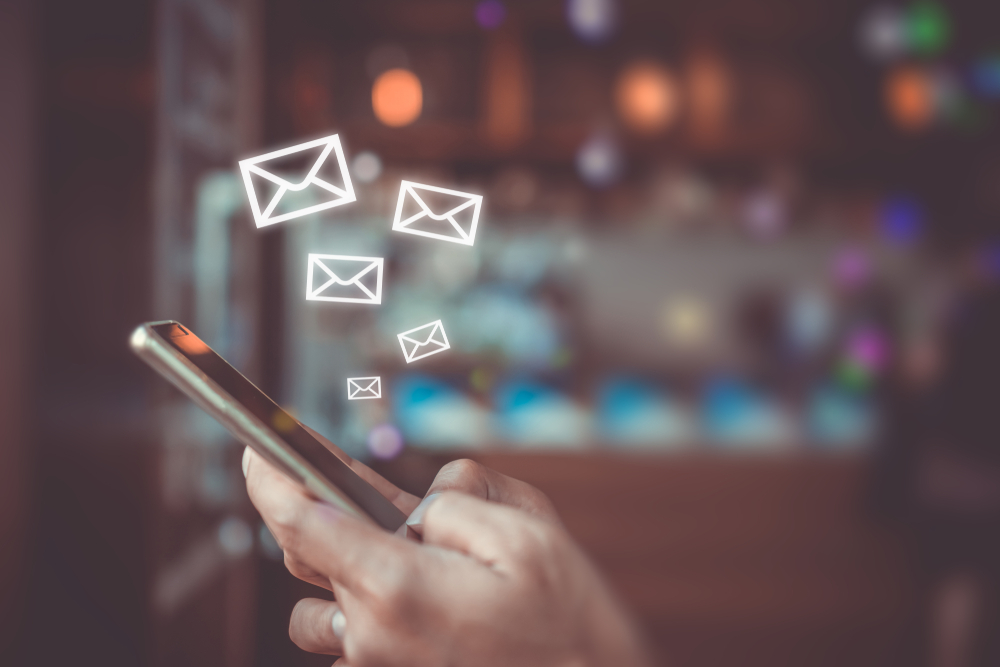Every day, the world sends roughly 23 billion text messages or approximately 266,000 per second.
This staggering number highlights how, despite the internet’s and social media’s popularity, text messaging continues to be an integral part of daily communication—though these aren’t always the usual SMS (Short Message Service) texts.
People use a variety of mobile apps and instant messaging platforms to talk to one another. However, one channel acts similarly to a text but can be even more engaging: multimedia messaging service (MMS).
This article tells you everything you need to know about multimedia messaging service and why you shouldn’t ignore it, even in 2023.
What is Multimedia Messaging (MMS)?
MMS is an extension of SMS that allows you to send and receive text messages that include audio, video, or images over a cellular network with data.
The maximum size of your messages will depend on your cellular provider; however, it typically caps at 5 MB, with the maximum file size being 500 KB.
How does it work? MMS relies on a Multimedia Messaging Service Center (MMSC) to send and receive messages. The MMSC follows the 3rd Generation Partnership Project (3GPP) protocol and specifications from the Open Mobile Alliance (OMA).
When you send an MMS message to someone, it is first encoded and sent to the MMSC.
Once the MMSC validates your message and the recipient, it routes a link to your message to whomever you’re sending it to. The recipient’s device connects to the MMSC through a wireless protocol, reads the link, and displays the message as you intended.
Differences Between MMS and SMS

It’s easy to confuse MMS with SMS since some people use them interchangeably. However, they differ in several critical aspects. To better understand how both MMS and differ, here is a quick overview of both messaging services before we discuss each in-depth:
| How Do MMS and SMS Differ? | ||
| Short Message Service (SMS) | Multimedia Messaging Service (MMS) | |
|
Character limits |
160 characters |
1600 characters |
|
Message types |
Text only |
Text, audio, video, and images |
|
Cost |
₱0.50/message (excluding VAT) |
₱6.50/message |
|
Throughput rate |
Low |
High |
| Network requirements | Does not require Wi-Fi |
Requires an internet connection |
1. Character limits
Each SMS has a 160-character limit. This forces you to exercise your copywriting skills to trim messages to their essence. Although you can still send messages longer than that, devices will separate them into two, disrupting their flow.
It’s why most businesses typically use SMS for quick retail promotions or appointment reminders.
On the other hand, your MMS messages can reach up to 1600 characters. This extra character capacity provides more creative opportunities to promote your business and provide additional details about your offers.
2. Message types
Text is the only type of message you can send through SMS—this is the most significant difference between SMS and MMS. If you want to send extra media through an SMS, you must include a link, which counts toward the character limit.
The media you can send through MMS can make messages more engaging for your audience, allowing you to include small images, GIFs, and audio clips. This variety provides greater creative opportunities to promote your business.
3. Average cost
SMS marketing for businesses is highly affordable, costing as low as ₱0.50 per message. The price is more appealing to companies, especially compared to MMS, which can cost ₱6.50 per message, depending on your carrier.
4. Throughput rate
Your audience receives SMS messages faster than MMS because they have a higher throughput rate. The throughput rate refers to how many messages can be sent through a network in a given period, usually measured in messages per second (MPS).
The MPS is lower for MMS for several reasons. The most pertinent is that MMS messages are larger than SMS because of the additional media attached; thus, networks must send more data, which takes longer than plain text SMS.
5. Network requirements
SMS doesn’t require devices to be connected to the internet to send and receive messages. It’s an advantage that businesses using SMS marketing have relied on since not every recipient has an internet connection.
Although devices can send text-only MMS without an internet connection, these are often less efficient and take longer to reach your recipients.
Devices must be connected to the internet, typically via mobile data from the carrier, to send and receive multimedia-rich content successfully.
Benefits of Using MMS
MMS can still be a valuable channel your business can tap into to engage your audience, even with instant messaging applications’ popularity.
1. Allows you to send engaging content
There’s a reason why 51.4% of marketers include some visual elements in almost all of their content. Images and videos grab more attention than plain text.
Sending multimedia content directly to your customers can be a significant advantage in differentiating your business from the competition.
Texting also allows you to meet audience expectations. Per studies, prefer to receive promotions and relevant offers through text. Exciting imagery and persuasive copy can amplify your MMS messages to propel your marketing campaigns to success.
2. High character limit
Since MMS doesn’t have the 160-character limit as SMS, it gives you more space to provide details about your offers and create captivating marketing copy.
For instance, if you’re running a giveaway, you can tell users about the prize, mechanics, and general terms and conditions all in a single message without redirecting them to your website.
It doesn’t mean you should write for the sake of writing. Following SMS marketing best practices still applies in MMS campaigns, such as providing immediate value and writing in a conversational tone.
3. Greater chance of being read
People spend a lot of time on their phones—in particular, Filipino internet users between the ages of 16 and 64 spend an average of five hours and 31 minutes on their phones.
Due to that screen time, there’s a high likelihood that your Filipino audience will see and read your messages.
Tailoring your message to the recipient can also increase the chances of audiences reading your MMS. Studies show that 71% of customers expect businesses to personalize their interactions; generally, non-personalized interactions frustrate 76%.
These benefits show that MMS is worth considering for your next mobile marketing campaigns. That said, you should also weigh its cons to avoid costly mistakes.
Drawbacks of Using MMS
Despite the advantages of MMS, it doesn’t mean it’s the perfect marketing channel. It still has a few drawbacks you shouldn’t ignore.
1. Costs more than SMS
As mentioned, MMS can cost as much as ₱6.50 per message, which can be expensive if you send them out regularly. Typically, cost is the primary reason why businesses would rather invest in SMS marketing campaigns over MMS.
Despite the cost, inserting images and audio clips into your messages can entice leads to contact your brand or audiences to follow through with their purchase. It will then help to consider your potential returns if you want to send promotional MMS messages.
If you’re looking into social media marketing, know it is still more expensive than MMS, potentially costing you thousands depending on the agency and the services you choose.
2. Feature availability varies
Countries and providers handle multimedia messaging differently. For instance, bulk sending MMS messages is unavailable in the Philippines. This limitation can often be a dealbreaker for large businesses wanting to reach as many customers as possible.
Message limits can depend, too, with some capping it at only 600 KB. It’s best to work closely with your chosen provider to understand your MMS capabilities before launching your mobile marketing campaigns.
3. Compatibility issues
Although smartphones can receive MMS, that doesn’t mean it will look the same across all devices. Screen resolutions, sizes, operating systems, and other factors may cause compatibility issues when sending multimedia messages.
Additionally, only phones with an internet connection can receive MMS messages, narrowing your potential audience further. You may struggle to reach people residing in highly remote locations with your MMS messages.
|
Using Multimedia Messaging Service |
|
|
Benefits |
Drawbacks |
|
Allows you to send engaging content |
Costs more than SMS |
|
High character limit |
Feature availability varies |
| Greater chance of being read |
Compatibility issues |
Know When to Use MMS and SMS
MMS can benefit your business, despite more advanced methods of communication becoming popular. The ability to attach images, videos, and audio allows you to send out content-rich messages to capture your audience.
A restaurant, for example, can send photos of its latest menu items to entice foodies to visit or book reservations. MMS can also work well if you run an eCommerce business.
Through MMS, you can send photos of your upcoming products or an exciting visual to announce a limited-time sale with an additional link to your store.
*Disclaimer – While bulk MMS isn’t supported in the Philippines, SMS is, making SMS marketing a potentially lucrative channel for your business.
Check out Semaphore’s leading business SMS solutions to learn how to maximize this text-based channel that isn’t going away anytime soon.
